Building Wireless Sensor Networks Using Arduino
Credits
About the Author
About the Reviewers
www.PacktPub.com
Support files, eBooks, discount offers, and more
Why subscribe?
Free access for Packt account holders
Preface
What this book covers
What you need for this book
Who this book is for
Conventions
Reader feedback
Customer support
Downloading the example code
Errata
Piracy
eBooks, discount offers, and more
Questions
1. A World without Wires
XBee radio hardware
XBee product families
Versions and variants
Official XBee documentation
Your first transmission
Using the SparkFun XBee Explorer USB
Getting and running XCTU
Updating the firmware
Failed firmware updates
Configuration
Talking to the XBee module
Receiving data
Uploading the sketch
Connecting the XBee
Receiving data
Switching to API mode
First module in API mode
Sending data
Second module in API mode
Starting and joining a network
Module addressing
Network scanning and remote configuration
The Commissioning button and LEDs
Making your network secure
Distributing the network key
Trust center link key
Trust center terminology differences
Selecting encryption keys
Setting up your secure network
Disabling network joining
Other XBee families
Configuration values
Summary
2. Collecting Sensor Data
Hardware setup
Serial on XBee
Handshaking signals
Voltage levels
Serial on a computer
Serial on Arduino
XBee shields
Other shields
Software setup
Example sketches
Variable types
PROGMEM and F() strings
Pointers
Serial port setup
The xbee-arduino library
Creating the sketch
Sending and receiving data
Sending data
The ZBTxRequest objects
Creating the sketch
Blocking and polling
Running the sketch
Callbacks
Callback types
Callback limitations
Receiving data
The ZBRxResponse objects
Creating the sketch
Collecting sensor data
Reading a DHT22 sensor
Handling packets using binary.h
Building and sending a packet
Constructing a packet using binary.h
Creating the sketch
Receiving and parsing a packet
Parsing a packet using binary.h
Creating the sketch
Troubleshooting
Communication with the XBee module is not working
Modules are not joining the network
Modules cannot talk to each other
Summary
3. Storing and Visualizing Your Data
Storing your data in the cloud
Introducing Beebotte
Channels and resources
Security
Access protocols
Sending your data to Beebotte
Preparing Beebotte
Connecting your Arduino to the Internet
Writing the sketch
Visualizing your data
Accessing your data
Keeping your data locally
Sending data over the serial port
Receiving data over the serial port
Summary
4. Controlling the World
Controlling your heating and/or cooling system
Replacing the thermostat
Controlling mains power
Hairdryer – an alternative
Control systems
Adding setpoint control
Subscribing to events
Reading events
Remembering sensor readings
Thermostat controller
Controlling a relay
Controlling off-the-shelf ZigBee devices
ZigBee profiles, endpoints, and clusters
ZigBee public profiles
Selecting a ZigBee device
Talking to a ZigBee on/off device
Joining the network
Factory reset in case of problems
Discovering services
The ZBExplicitTxRequest objects
Sending a message
The ZBExplicitRxResponse objects
Receiving messages
Receiving on/off command responses
More ZigBee features
Summary
5. Standalone XBee Operation
Creating a window sensor
Connecting things
Powering the module
Connecting the window sensor
I/O pin naming
Configuring the XBee module
Remotely sampling the pins
Querying the pin state
Automatically sending the sample data
The configuration values
Receiving the samples on the coordinator
The ZBRxIoSampleResponse objects
Receiving the I/O samples
Creating a standalone relay
Connecting things
Configuring the XBee module
Remotely toggling an output pin
Summary
6. Battery Power and Sleeping
Battery power
Lithium-ion and lithium polymer batteries
Regulators
Saving power
Power saving techniques
Knowing what to optimize and when to stop
XBee power-saving
The XBee sleep modes
Configuring the network
The sleeping window sensor
Battery power
Power usage
Arduino power-saving
The XBee configuration
Hardware
Powering the Arduino
Hardware connections
Putting the Arduino to sleep
Sleep modes
Waking up
Creating the sketch
Power usage
Summary
Index



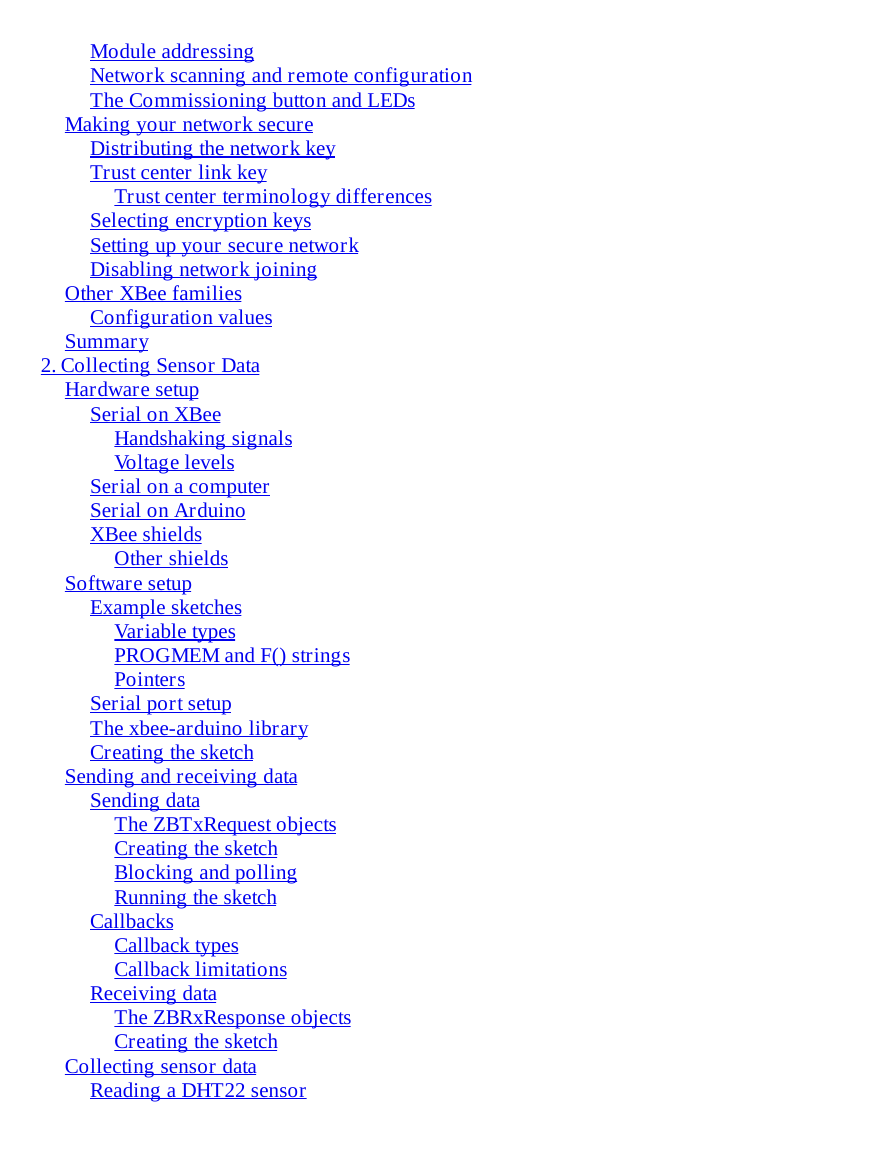
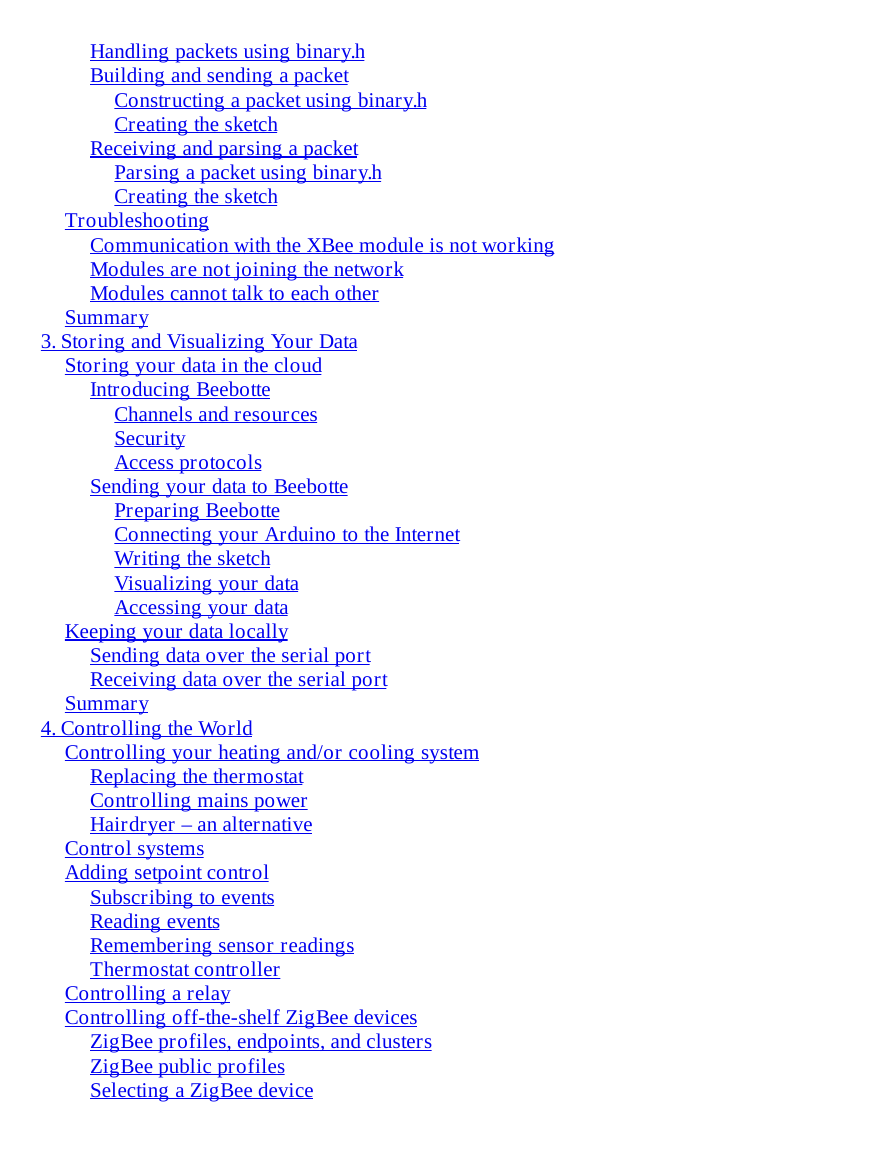
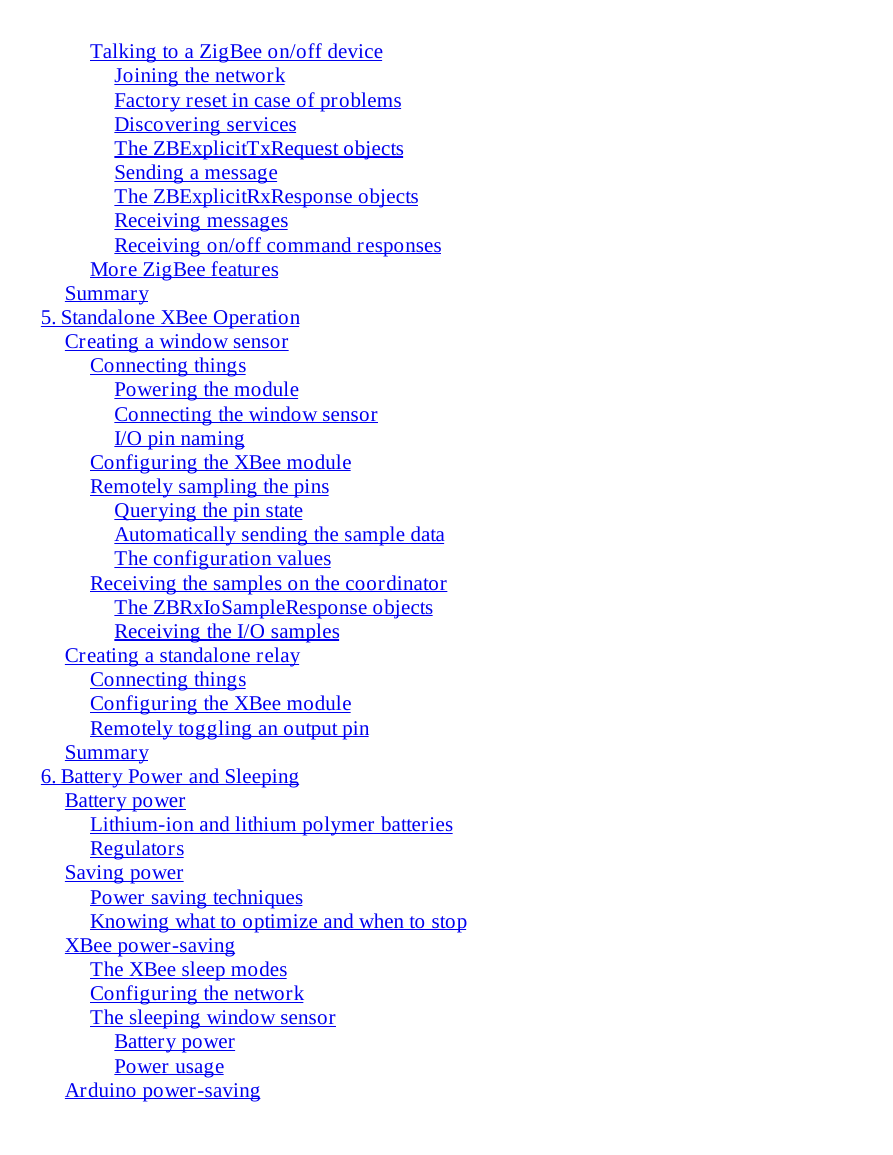
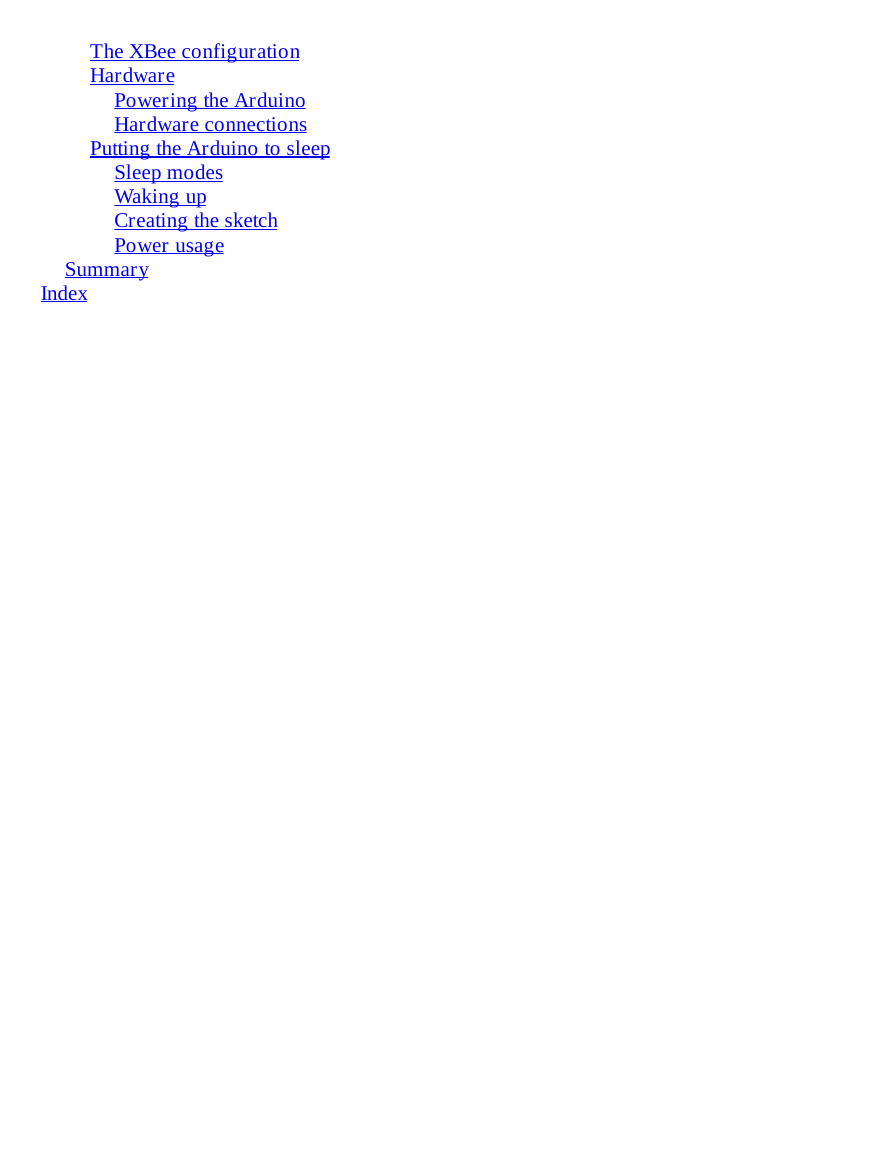
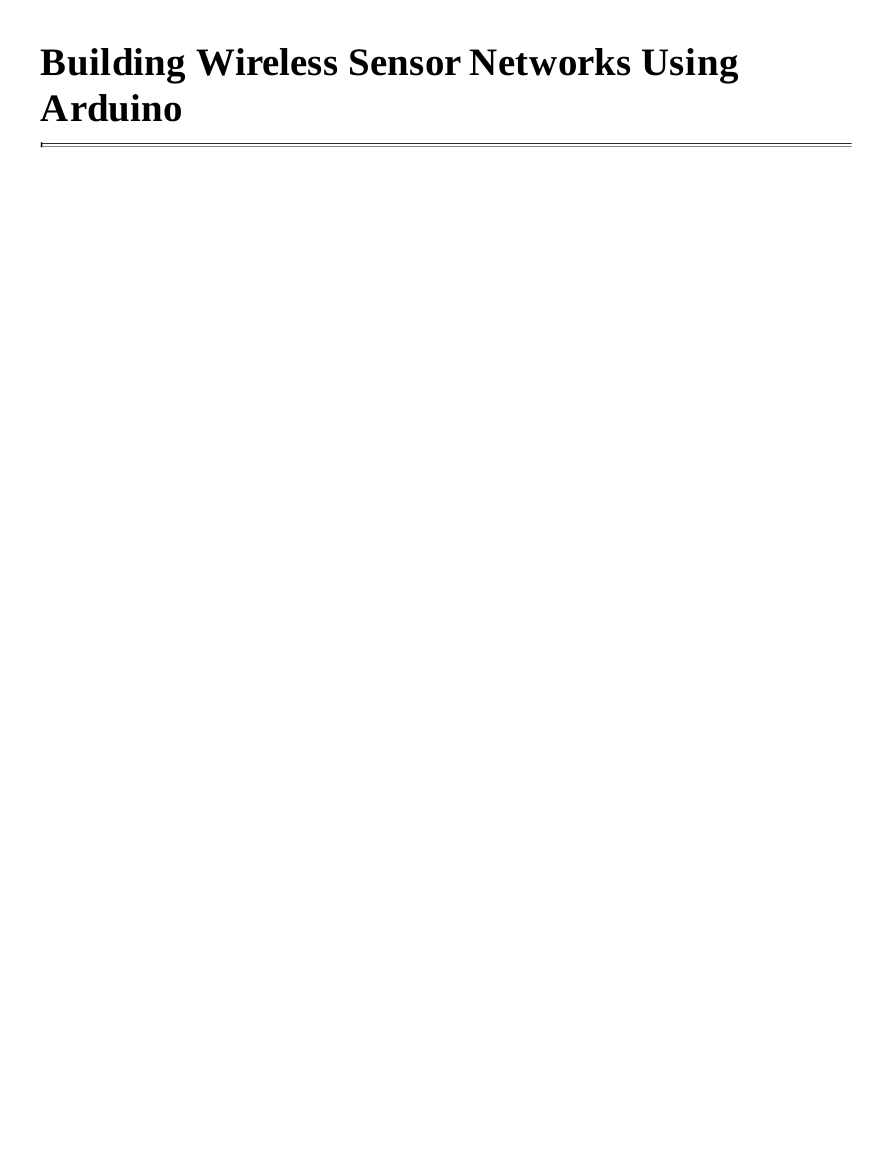








 2023年江西萍乡中考道德与法治真题及答案.doc
2023年江西萍乡中考道德与法治真题及答案.doc 2012年重庆南川中考生物真题及答案.doc
2012年重庆南川中考生物真题及答案.doc 2013年江西师范大学地理学综合及文艺理论基础考研真题.doc
2013年江西师范大学地理学综合及文艺理论基础考研真题.doc 2020年四川甘孜小升初语文真题及答案I卷.doc
2020年四川甘孜小升初语文真题及答案I卷.doc 2020年注册岩土工程师专业基础考试真题及答案.doc
2020年注册岩土工程师专业基础考试真题及答案.doc 2023-2024学年福建省厦门市九年级上学期数学月考试题及答案.doc
2023-2024学年福建省厦门市九年级上学期数学月考试题及答案.doc 2021-2022学年辽宁省沈阳市大东区九年级上学期语文期末试题及答案.doc
2021-2022学年辽宁省沈阳市大东区九年级上学期语文期末试题及答案.doc 2022-2023学年北京东城区初三第一学期物理期末试卷及答案.doc
2022-2023学年北京东城区初三第一学期物理期末试卷及答案.doc 2018上半年江西教师资格初中地理学科知识与教学能力真题及答案.doc
2018上半年江西教师资格初中地理学科知识与教学能力真题及答案.doc 2012年河北国家公务员申论考试真题及答案-省级.doc
2012年河北国家公务员申论考试真题及答案-省级.doc 2020-2021学年江苏省扬州市江都区邵樊片九年级上学期数学第一次质量检测试题及答案.doc
2020-2021学年江苏省扬州市江都区邵樊片九年级上学期数学第一次质量检测试题及答案.doc 2022下半年黑龙江教师资格证中学综合素质真题及答案.doc
2022下半年黑龙江教师资格证中学综合素质真题及答案.doc